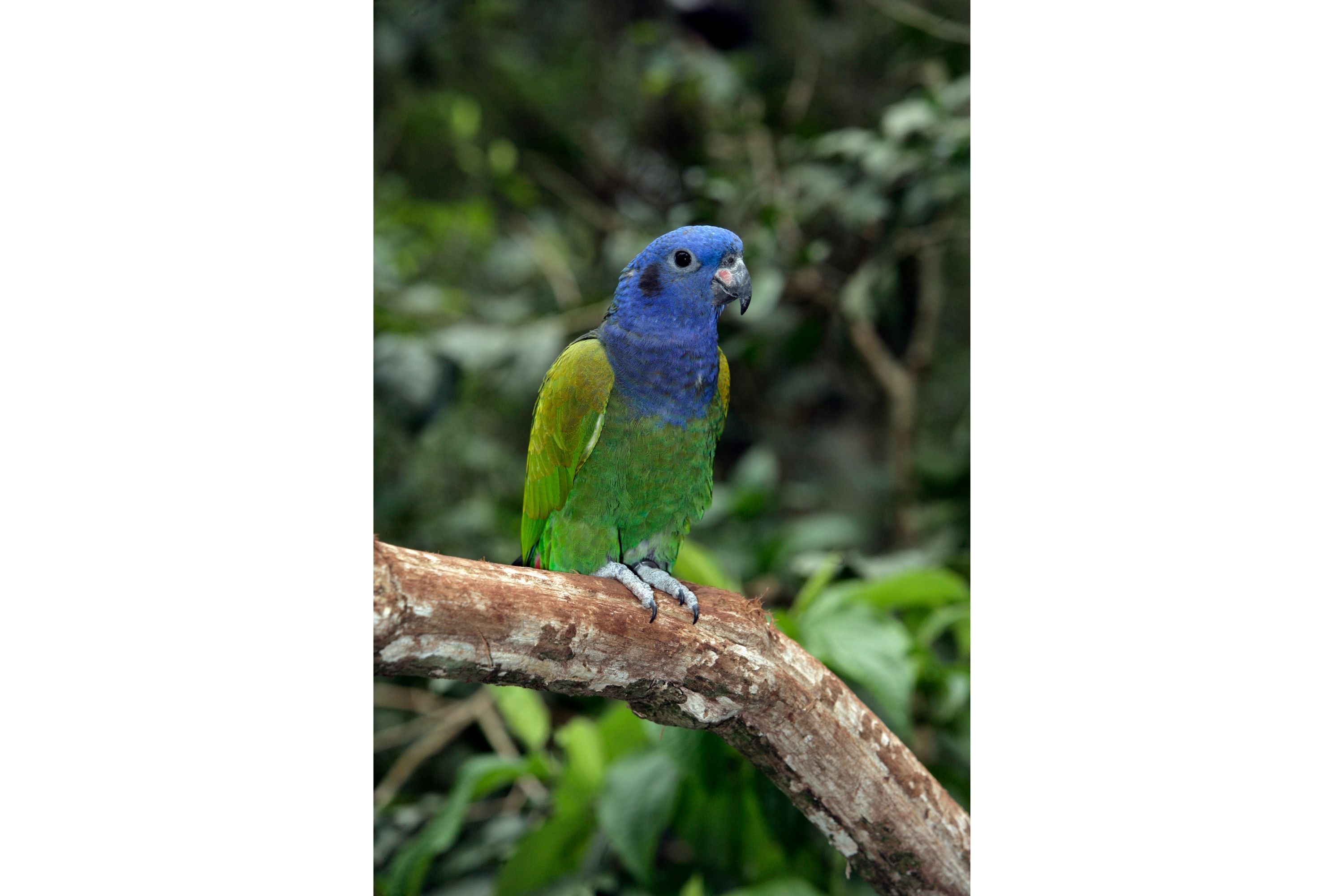Blue-headed parrot
(Pionus menstruus)

Description
The blue-headed parrot, also known as the blue-headed pionus (Pionus menstruus) is a medium-sized parrot of about 27 cm in length. The body is mostly green, with a blue head and neck, and red undertail coverts. It is a resident in tropical and subtropical South America and southern Central America, from Costa Rica, Venezuela and Trinidad south to Bolivia and Brazil. Its habitat is forest and semi-open country, including cultivated areas. It is largely restricted to humid or semi-humid regions, but locally extends into drier habitats, at least along rivers. The blue-headed parrot lays three to five white eggs in a tree cavity. Blue-headed parrots are noisy birds and make light, high-pitched squeaking sweenk calls. They eat fruit and seeds, and sometimes grain. They roost communally in palm and other trees, and large numbers can be seen at the roost sites at dawn and dusk. Blue-headed pionus parrots are popular as pets. Compared to other parrot species (Amazons for example) they are very quiet. They are affectionate, but not known for their talking ability. The blue-headed parrot is about 28 cm (11 in) long and weighs 245 g. It is mainly green with a blue head, neck and upper breast, red undertail coverts, and some yellowish on the wing coverts. The upper mandible is black with reddish areas on both sides. They have dark ear patches. In addition to the well-known nominate subspecies found throughout most of the species' South American range, there are two more localized subspecies: rubrigularis from southern Central America and the Chocó has an overall paler plumage and typically a relatively distinct pinkish patch on the throat, and reichenowi from the Atlantic Forest in east Brazil has a paler bill and most of the underparts blue. In all subspecies the male and the female are alike, and juvenile birds have less blue on the head, as well as red or pinkish feathers around the ceres. They moult into their adult plumage at about 8 months of age, but it can take up to two years for the full blue hood to emerge. They eat fruit and seeds, and sometimes grain. The blue-headed parrot nests in tree cavities. The eggs are white and there are usually three to five in a clutch. The female incubates the eggs for about 26 days and the chicks leave the nest about 70 days after hatching.
Taxonomic tree:







